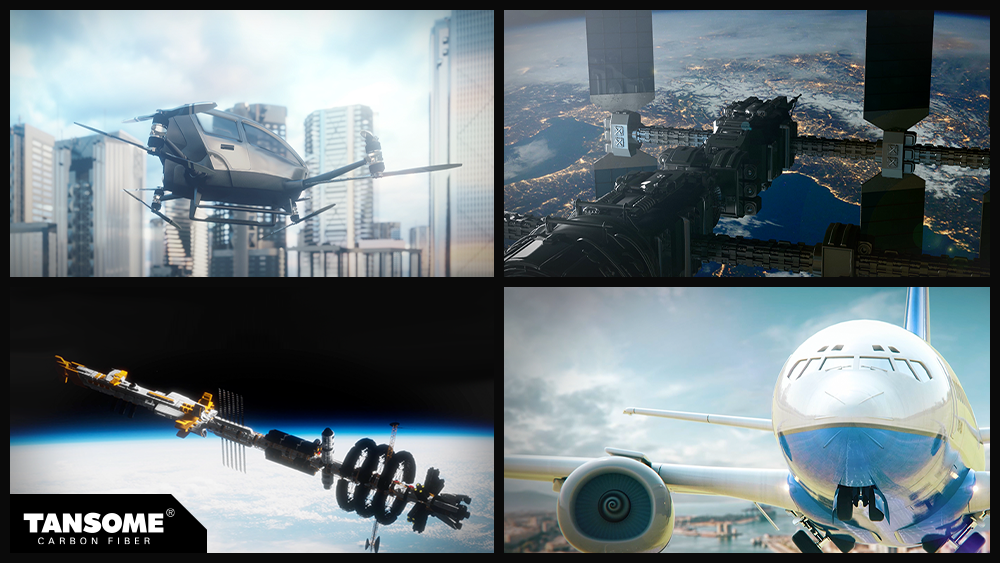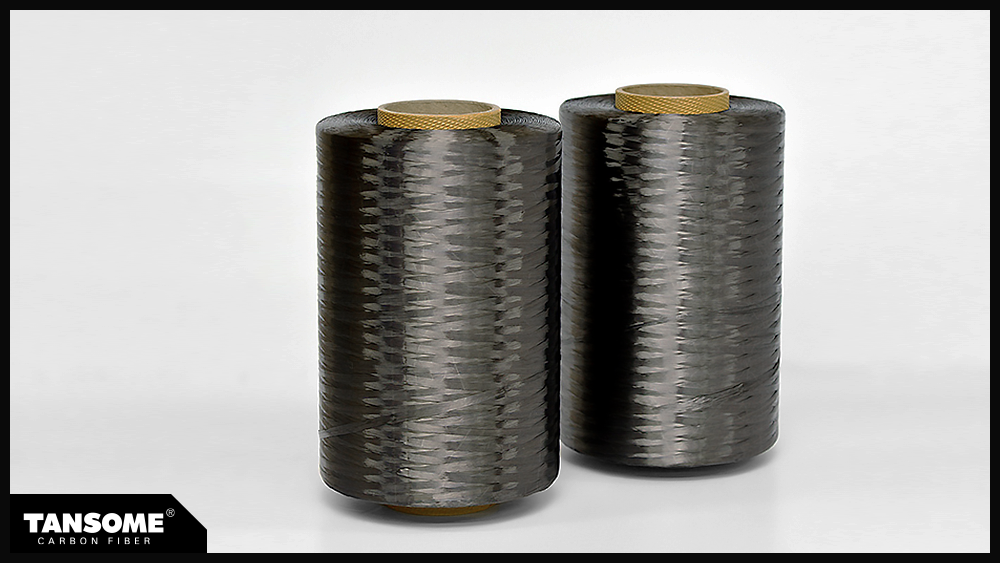Brand Journalism
Brand Journalism
2023-03-03
Carbon Fiber in Everyday Life (III)
‘Top Gun: Maverick’ has become the second highest-grossing international release in 2022, surpassing ‘Frozen’ in terms of ticket sales. Its scenes depicting fighter pilots’ passion and comradery on the 5th generation fighters not only brought joy to the eyes of movie-goers but also attention to the life of pilots in general. Especially the scene where Tom Cruise’s fictional character in the movie takes the supersonic Darkstar aircraft on an unauthorized test flight, pushing it to reach a speed of Mach 10, takes the movie to another level of excitement.
One might wonder how the aircraft depicted in the scene could have withstood such heat buildup in that situation. What is it made of that makes it so strong and fast?
Maybe something like carbon fiber can be used to build such a plane? Carbon fiber-reinforced materials could make fighter jets lighter, stronger, fly faster and its acceleration performance better. Because they are lighter in weight, it means they can carry more missiles than the conventional material-reinforced fighters. Thanks to its heat-resistance, these fighters can withstand the frictional heat generated during the flight because carbon fibers are heat-treated at over 1,000°C.
Building planes to fly faster and longer
As carbon fibers undergo the tanning process during the course of manufacturing, they show better tensile strength, heat-resistance and durability while weighing only one-fourth that of steel.
That is why out of all the new materials applied to jets that epitomize most advanced technologies, carbon fibers stand out the most.
When applied to airplanes, carbon fiber helps to improve energy efficiency and reduce fuel consumption which will in turn contribute to sustainability. Korea’s first carbon fiber TANSOME® developed by Hyosung Advanced Materials is a new material of dreams that will help us build a future of light-weight and safety.

Space exploration on carbon fiber
Carbon fiber has emerged as one of the most promising materials in the aerospace field. After all, aerospace is where the material was first introduced a long time ago with space shuttles and satellites. Carbon fiber is actually a by-product of the space competition between the US and Soviet Union that started off in the wake of the World War II. The two powers in the Cold War era locked horns with each other to develop carbon fibers.
Since then, the material has long been applied in various industry for the development of jets nowadays often using carbon fiber alongside aluminum and titanium.

Fly lighter on carbon fiber
Carbon fiber is particularly widely applied in the aerospace industry. Aircrafts made of carbon-fiber composite airframes boast more durability and lighter in weight which means better energy efficiency, less fuel consumption and larger cargo volume.
Boeing and Airbus are using carbon-fiber composite airframes for their B787 and A350 and plan to expand its application.
Boeing 787 initially used only 10 percent of its materials made of carbon fiber but now around 50 percent of its materials are carbon fiber-reinforced ones. Its airframes are also made of carbon-fiber composite. In turn, B787 has seen its fuel efficiency improve by 20 percent.
Airbus A380 aircraft also uses carbon fiber-reinforced materials for its key parts with 30 percent of its airframes on carbon fiber.
In addition, with the US aiming to commercialize the Urban Air Mobility by 2024, urban transport vehicles to ship passengers and freight are also expected to use carbon fiber for lightweight and smaller sized wings of the vehicle. This would reduce fluid resistance.
Many multinational companies have their eyes on developing solar-powered drones which can be used in various sectors such as reconnaissance, media broadcasting and meteorology. Carbon fibers are also used in solar drones. Korea’s homegrown space rocket Nuri that successfully reached orbit in 2022 also incorporated carbon fibers.

An ultra-high-strength carbon fiber that is 14 times stronger than steel
Hyosung Advanced Materials’ TANSOME® is known for its lightweight, tensile strength, thermal expansion, and exceptional durability. It also has excellent corrosion resistance and electrical conductivity while being safe to the human body. By any measure, it is a fiber that features unparall eled strength in the history of humanity.
Hyosung Advanced Materials is not complacent. It has continued to further develop carbon fiber and has succeeded in developing an H3065 (T-1000 class) ultra-high-strength carbon fiber with a tensile strength of 6.4 GPa or higher and an elastic modulus of 295 GPa or higher in October 2022. It is 14 times stronger than steel, which is even stronger than the company’s existing TANSOME which is already 10 times the strength of that of steel.
A T-1000 class carbon fiber of the same class comes in handy in various fields, such as the latest aircraft fuselages and parts made by Boeing and space launch vehicles including satellites.
This is because compared to aluminum which had been widely used in the space launch projectiles, it can withstand loads and boost propulsion while reducing the weight of a projectile as much as possible. We at Hyosung believe our T-1000 class carbon fiber is going to be used more extensively in the future.
Hyosung Advanced Materials is also actively engaging in research and development designed to expand the application of the T-1000 class carbon fiber, which we believe will only facilitate the days when it is applied to various aerospace products such as space shuttles and next-generation rockets.
Hyosung’s ultra-high-strength carbon fiber reaches closer into space
Manufacturers around the world are working hard to make vehicles including airplanes and cars that help us travel faster and safer. This is why it is imperative that the manufactures opt for carbon fibers that help build lighter and stronger body frames to improve fuel and energy efficiency, and reduce greenhouse gas emission.
Particularly, carbon fiber is inseparable from the aerospace industry given its features and characteristics. Clearly its application in the industry is only to grow as the industrial technologies advance. After all, the aerospace industry epitomizes advanced technologies and Hyosung Advanced Materials T-1000 class carbon fiber stands ready to play a key role in the area to help the humanity move closer into space.
Hyosung Advanced Materials sees a great potential in carbon fiber as a solution to decarbonization that will be a must to protect our planet Earth for our future generations, not to mention convenience and safety it brings to our current life. There are no other materials on earth that are stronger and lighter, and have better tensile strength and durability, and yet eco-friendlier than carbon fiber.
Hyosung continues to work on its technology development because we at Hyosung believe it holds the key to a future of better life for us and generations down the road. This irreplaceable new material is going to further advance at the hands of Hyosung Advanced Materials.